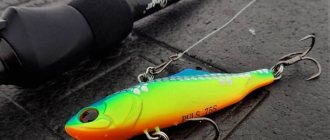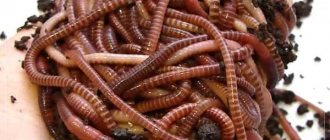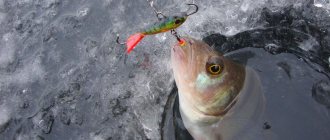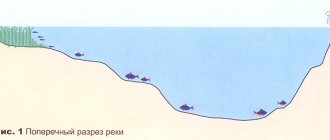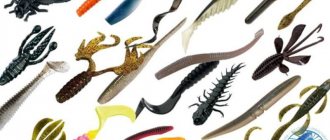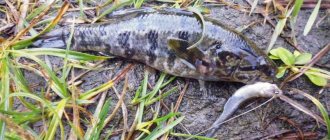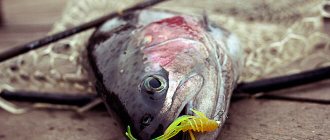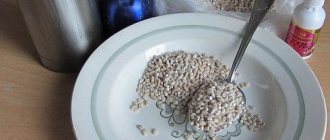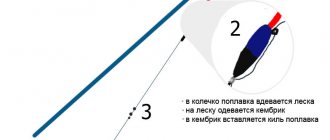- Silicone worms, characteristics.
- Price at the time of writing.
- Customer reviews.
- Links to worms on aliexpress.com.
Silicone worms , which will be discussed below, could not remain without our attention. More than three and a half thousand orders and a lot of positive reviews. It should be noted that the price/quality ratio of these worms is the best. We are not fans of float fishing. We were interested in worms for fishing with SUL spinning rods. But when we read in customer reviews that these silicone worms are used to catch fish on a float rod, we could not resist purchasing. The worm is made of very soft, edible silicone. This bait is good for catching not only perch. Peaceful fish are often caught. We recommend this worm for purchase.
Silicone worms, characteristics
The manufacturer positions these silicone worms as a copy of earthworms. From our point of view, they are more like dung. The main thing is that they attract fish perfectly.
The weight of one silicone worm is 0.26 grams. Length 3.6 cm. Color dark red. Smells like shrimp, FA-160. Packaging 50 and 100 pieces.
Edible for catching peaceful fish
Date: March 21, 2015 | 894
With the advent of more and more new baits and materials in the fishing industry, ideas about fishing are changing. Thus, until recently it was believed that spinning tackle and fishing with artificial baits were purely for catching predators and predatory fish. However, with the use of elegant spinning rods, thin lines of small ultralight baits, including edible silicone, the boundary between catching peaceful and predatory fish is smoothed out. And more and more often you hear about catching peaceful fish using a spinning rod. Edible, modern silicone baits have proven to be one of the most effective in catching unusual spinning trophies.
You can catch almost any fish, even the most seemingly peaceful ones. The similarity of many new generation silicone baits, not with fish fry, but with worms, leeches, crayfish, larvae, insects, significantly expands the list of fish species that can now be caught with a spinning rod. And in the old days, on fairly large rotating and oscillating spoons, there were bites from peaceful fish. Either a bream will be caught, or a seasoned carp. But such cases were extremely rare. With the use of certain types and subclasses of edible rubber, such trophies occur among microjigers more and more often - the species composition is wider, not only large specimens are caught, but also medium and small fish. This, of course, is very interesting and significantly increases the excitement of the fishing itself, because... Instead of the expected bass or pike, a large carp, or a qualifying crucian carp, or who knows who else may grab it. It is clear that it is not often possible to purposefully catch peaceful fish for food. In most cases, such bites happen along the way, when catching some kind of predatory fish. However, if you choose the right bait and type of food, you can slightly increase the chances of such unusual catches.
I will briefly mention those breeds of relatively peaceful fish that quite often come across microjigging and being eaten. In ponds and lakes, when fishing for perch and pike, which constitute the main catch for a spinning angler, bites of crucian carp, carp, and even tench occur. There are known cases of silver carp being caught for food. It is clear that the higher the concentration, the larger the population of some of the peaceful fish in the reservoir, the greater the chance of catching it with a microjig. So, there were cases when catching perch in a pond, and periodically I came across good crucian carp. In general, in that reservoir there were both carp and tench, but the population of crucian carp was the most numerous, and in general, the pond was constantly attacked by crucian floaters. But there was also perch there. While hunting for perch with an ultralight spinning rod, I also caught crucian carp. Sometimes 2-3 good specimens per fishing trip. But, alas, there were no bites from carp and tench. There were relatively few of them per reservoir. Of course, there were chances, but the probability of a bite was negligible.
Another case. A lake where, in addition to perch and pike, there were carp, crucian carp and tench. Same as in the previous case. Only there were very few crucian carp. There is also a little carp. But tench is in abundance. So, for food, along with catching predators, we came across tench, and very good ones. There were several carp bites. Well, I didn’t catch any crucian carp. So, we can conclude that with a large number of some kind of peaceful fish in a reservoir, the chances of catching it on a microjig increase very much, up to the possibility of targeted fishing of this kind.
So, carp, crucian carp and even tench, quite common inhabitants of many small and medium-sized enclosed reservoirs, are excellent and very real trophies for a spinning angler who practices microjig fishing for small edibles.
In rivers and their bays, channels, on edible silicone, again, along with catching a predator, you come across bream, carp, rudd, and catfish. Very small, delicate baits can catch gobies, small bream, even roaches. In bays where there are a lot of large rudd, they can be caught very productively with the smallest baits, with the lightest tails. Right up to nanojig, where edibles of 1” or less, or cut from edibles, are placed on a jig weighing up to 1g.
To catch peaceful fish, the edible fish should be the smallest, measuring 1, 1.5, maximum 2 inches. The best ones are silicone worms, slugs, twisters and crustaceans. The smallest vibrating tails will also work.
This is not a dogma, but it is on the smallest baits, on elegant gear, that there will be the most bites from a wide variety of peaceful fish. It is clear that peaceful fish are excellent at catching a live worm, and will be interested in its imitations made of soft silicone. Hearing interesting vibrations from playing with such bait, hearing an edible smell, the fish attacks. The bait is edible and is confidently swallowed by fish. This is how we catch unusual species of fish using a spinning rod. The tackle should be the thinnest, most elegant, equipped with a fluorocarbon leader of small diameter (no more than 0.14-0.15mm, unless you plan to catch something very large).
The edibility of silicone is a very important parameter, especially for peaceful fish. If this is only an insignificant factor for a predator, then if you want to catch peaceful fish, this is a must. In terms of color, dark colors (shades of green, purple, brown, black) work best for peaceful fish. Sometimes bright colors work well, for example, pungent green or salad. Natural colors, translucent, somehow not particularly popular with peaceful fish. But there will probably be bodies of water where these colors will work on peaceful fish.
Yes, if you fish with large twisters, crayfish, hybrids, 4-5” in size, you can grab a large carp, for example. And this happens.
A few separate words should be said about catching catfish using silicone and edible fish. Catfish, in general, can be considered a predator. But, of course, they catch it mainly with donks and various animal baits. It is also caught on spinning rods, but not as often. And it is possible to catch it purposefully, for example, for food, only where there are a lot of catfish.
It is not uncommon to see catfish wandering around the shallows, especially in early summer. They can bite on spinning bait not only from the bottom, but also in deep holes. There were bites near the surface and in very shallow areas of reservoirs. To catch catfish, you should use fairly large silicone. The favorites here are large vibrotails, silicone worms, crayfish, cuttlefish, all from 3 inches in size. Usually 4-6".
Share with your friends:
Categories: Edible · Tags: Crucian carp, Carp, Rudd, Tench, Lures, Catfish, Edible
Customer reviews.
- Excellent worms, they smell like shrimp. I really liked how they were alive. I'll order more, I haven't gone fishing yet.
- We reached the south of Ukraine in a month. Feels like real ones. There is a smell - I think the fish will like it. 3.5 cm long and about 2-2.5 in diameter.
- The order arrived ahead of the stated deadline. The worm is made with high quality, the silicone is soft. Today I went to the pond, the result was positive. In my opinion, one nozzle will be enough for more than one day, as it wears out. Successful orders and positive feedback, I recommend!!! Updated reviews: The second trip was also successful. There is no longer any need to buy dung worms at the market! Cool stuff! I recommend!!!
- Fully corresponds to the description. The worms are soft and judging by the smell, they are impregnated with an attractant. Fast sending. Good luck and prosperity to the seller.
- The goods reached Severodvinsk relatively quickly - a little over a month. They look like real ones. And the smell is quite persistent. It’s hard to put into words, but there is something of the real thing.
- The worms are like real ones, flavored. The smell of spoiled crab sticks. I bought it for 40 rubles. Delivery is long, two months. I'm happy with the quality.
- Everything is good, corresponds to the description, delivery is not the fastest. They smell like shrimp. Thanks to the seller! Updated reviews: Everything is great, I recommend it.
Rice. Rotan caught on an artificial worm, on a float rod
Links on aliexpress.com:
- Pack of 100 pieces. Free delivery.
How to properly attach a worm to a hook
Putting a worm on a hook correctly is not an ordinary task. The success of the fishing itself directly depends on this manipulation with bait. There are basic methods of baiting a worm, which every self-respecting angler should master perfectly. The most well-known way to bait a bait is stocking bait . You need to thread the worm through the head along the entire body and along the entire length of the hook shank so that the sting remains inside the worm, and its tail hangs freely from the hook and moves.
Stocking attachment
Another way is a ring or figure eight nozzle . The worm is pierced through with a sting in its upper part, and the tail part is pierced onto the hook, covering its sting and thereby closing the ring. By making an additional through puncture in the middle of the bait, they get the appearance of a figure eight. A certain number of worms are planted in a bunch, piercing them right through the middle. With this method, the worm wriggles both front and back relative to the puncture. Up to a dozen individuals of similar size can be planted in this way.
By dividing the worm into several parts, you can place them on the hook in short sections, completely covering its shank and sting. This method is called piece . The sea worm, because of its tenderness, is placed through the body on the forend and on the fishing line of the tackle. This method allows you to most reliably hold the bait on the hook.
The silicone worm, which is most often used by spinning anglers when catching predators, is put on hooks in ways applicable to conventional silicone baits.
